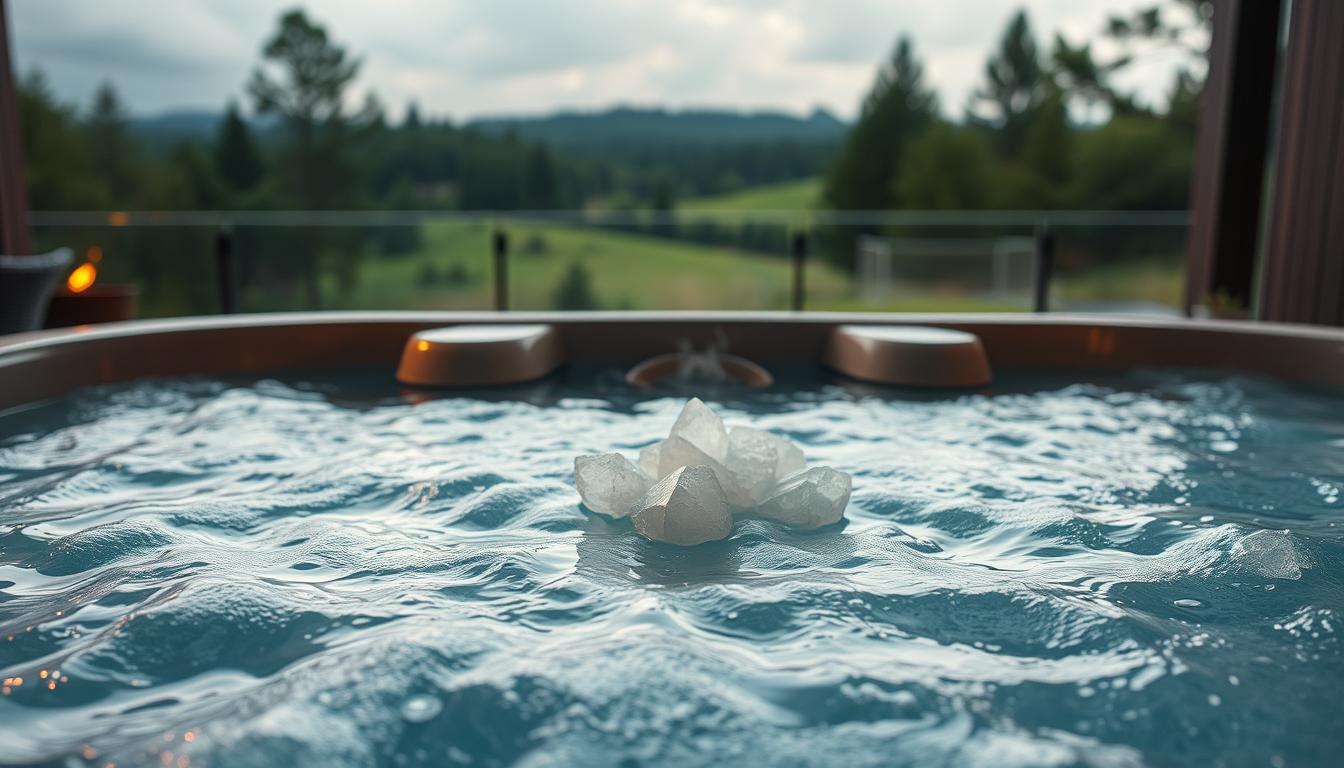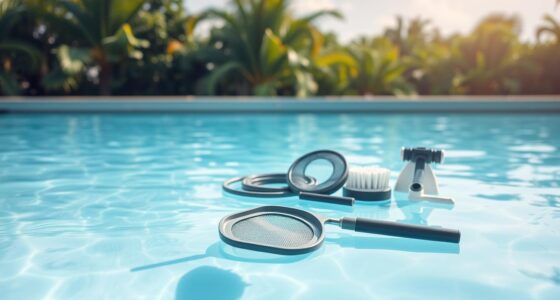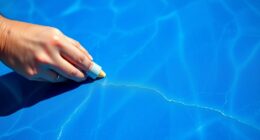Did you know that nearly 80% of hot tub owners may not be aware of the potential risks associated with cyanuric acid? This surprising statistic puts into perspective the importance of understanding CYA levels in your hot tub maintenance routine. While cyanuric acid is often hailed for its benefits in swimming pools by stabilizing chlorine and extending its efficacy, the same advantages can turn into drawbacks in the confined environment of a hot tub. This article explores the ongoing debate about cyanuric acid, aiming to inform you about its implications for your water quality and health, and how to effectively manage them with the right alternatives for a serene soak.
Key Takeaways
- Cyanuric acid serves as a chlorine stabilizer in pools but presents challenges in hot tubs.
- High levels of CYA can affect chlorine efficacy and overall water quality.
- Understanding recommended CYA levels is crucial for safe hot tub maintenance.
- Health risks linked to elevated CYA levels necessitate careful monitoring.
- Alternatives to CYA can simplify your hot tub care while ensuring optimal conditions.
Understanding Cyanuric Acid (CYA)
Cyanuric acid, often referred to as CYA, is a chemical compound consisting of carbon and nitrogen. To grasp the full cyanuric acid definition, think of it as a vital component frequently used in pool management. Introduced to the pool industry in the mid-20th century, its primary role is to stabilize chlorine levels against degradation brought on by UV rays from sunlight. This function proves essential, especially in outdoor swimming environments.
The chemical properties of CYA make it uniquely suited for protecting chlorine, significantly prolonging its effectiveness in open-air pools. However, in hot tubs, the situation changes. With less sunlight exposure, the necessity for CYA diminishes. This shift leads to ongoing discussions among pool and spa owners about the relevance and impact of incorporating CYA into their maintenance routines.

The Purpose of CYA in Swimming Pools
Cyanuric Acid (CYA) plays a crucial role in pools by enhancing chlorine stabilization. When added to pool water, CYA binds with chlorine and protects it from degradation caused by ultraviolet (UV) rays from the sun. Without CYA, chlorine can diminish rapidly, leading to frequent and costly chemical replenishment. This stabilization not only extends the life of your chlorine but also minimizes the work needed to maintain proper sanitation in the water.
Especially in expansive outdoor pools, the role of CYA in pools becomes even more pronounced. It allows for a more consistent chlorine level, creating an environment conducive to safe swimming. In sunny conditions, pools without the benefit of CYA can see significant drops in chlorine efficiency within just a few hours. By stabilizing chlorine, CYA helps ensure that your pool remains clean and safe with less effort on your part.
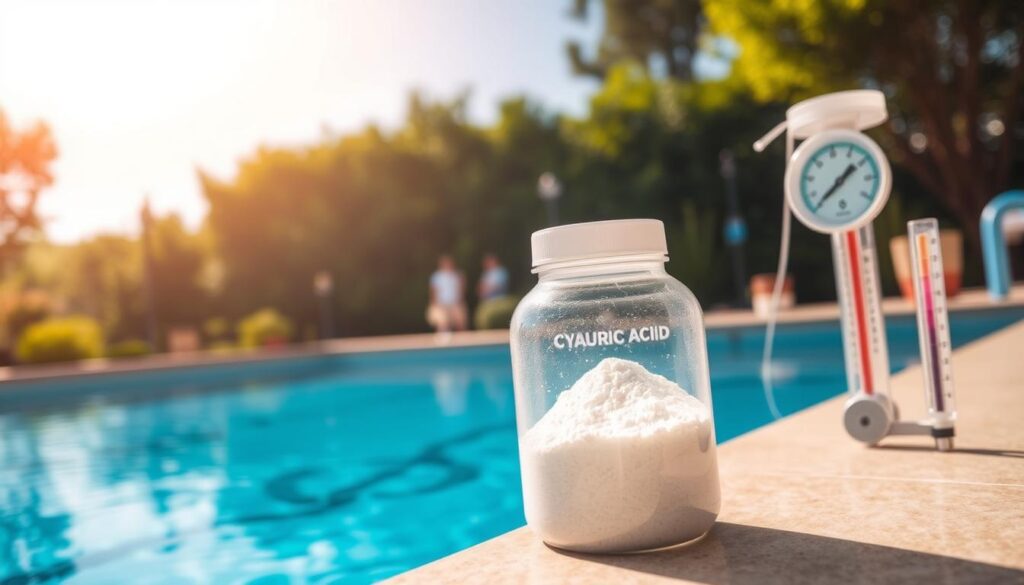
In addition to prolonging chlorine effectiveness, CYA provides essential UV protection. When chlorine is shielded from direct sunlight, it maintains its disinfecting properties longer, promoting healthier water for all swimmers. By understanding the importance of CYA, you can make informed decisions about pool maintenance and enjoy a safer swimming experience.
The Cyanuric Acid Debate? Not for Hot Tubs
When considering the use of cyanuric acid in hot tubs, it’s important to understand both sides of the CYA pros and cons. By examining the benefits and drawbacks, you can make an informed decision that aligns with your hot tub maintenance routine.
Pros of Using Cyanuric Acid
Cyanuric acid serves as a stabilizer for chlorine, protecting it from the harmful effects of sunlight. This is particularly beneficial for outdoor spas where exposure to UV rays can lead to chlorine degradation. Reduced chlorine loss can decrease maintenance frequency, making it easier to maintain balanced water conditions.
Cons of Using Cyanuric Acid in Hot Tubs
The debate over CYA use in hot tubs often centers around its potential drawbacks. Studies, including recommendations from health authorities, indicate that high levels of cyanuric acid can diminish chlorine effectiveness over time. This reduction in efficacy can result in longer kill times for harmful bacteria, including pseudomonas aeruginosa. This accumulation may complicate water management, leading to potential health risks and adverse effects.
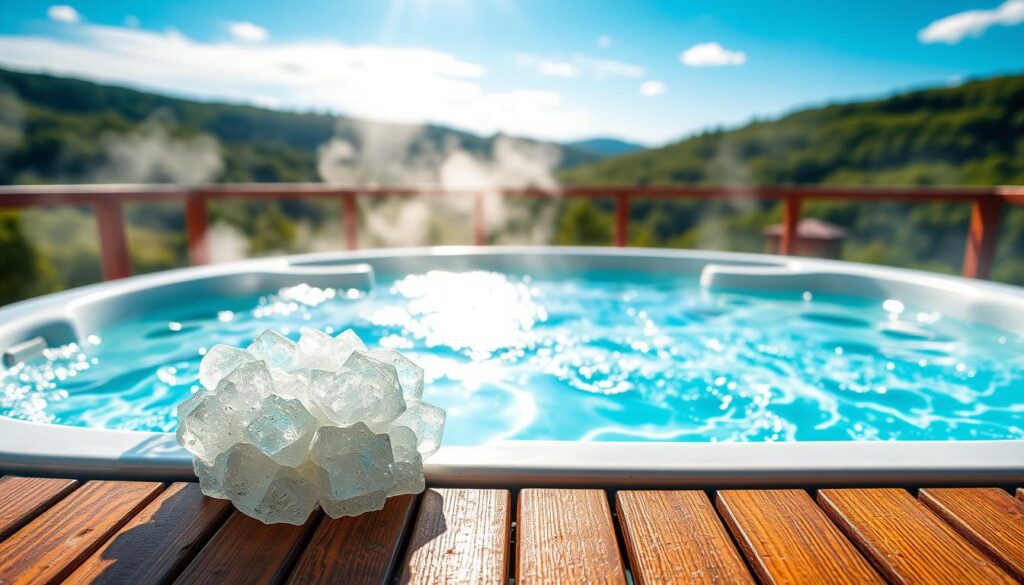
| Aspect | Pros of CYA | Cons of CYA in Hot Tubs |
|---|---|---|
| Chlorine Protection | Protects chlorine from UV rays | Can reduce chlorine efficacy |
| Maintenance Frequency | Reduces frequency of chlorine addition | Increases water management challenges |
| Health Impact | May lead to balanced water chemistry | Potential health risks with high CYA levels |
The Impact of CYA on Chlorine Efficacy
Cyanuric Acid (CYA) plays a crucial role in the efficacy of chlorine when managing water in hot tubs. Understanding the relationship between CYA and chlorine will help you maintain safe and sanitary water conditions. The impact of CYA on chlorine extends beyond just stabilization; it significantly alters chlorine kill times and raises potential health risks of CYA when not monitored diligently.
CYA and Chlorine Kill Times
High levels of CYA can inhibit chlorine’s effectiveness as a sanitizer. Research shows that when CYA levels reach around 50 ppm, chlorine kill times can nearly double. This prolonged duration for chlorine to neutralize harmful microorganisms poses a significant risk for hot tub users. A slower kill time means that bacteria may linger longer in the water, increasing exposure to harmful pathogens. It becomes essential to regularly check CYA levels to ensure that your hot tub remains safe for enjoyment.
Health Risks and CYA Levels
The health risks of CYA become pronounced when levels exceed recommended ranges. Elevated CYA can lead not only to ineffective sanitation but also to an increased likelihood of bacterial infections. Users may notice skin irritations or other health complications connected to poor water quality. Monitoring your CYA levels isn’t just about maintaining crystal clear water; it’s vital for safeguarding your health and well-being.

CDC Recommendations on CYA for Hot Tubs
The CDC emphasizes the importance of following strict hot tub safety guidelines, particularly regarding cyanuric acid (CYA) use. Maintaining a safe and enjoyable hot tub experience requires awareness and adherence to these recommendations.
The CDC strongly advises against the incorporation of CYA in hot tubs. The reasoning behind this recommendation is clear. CYA can negatively impact the effectiveness of chlorine, a critical component in keeping your hot tub water clean and safe. When the efficacy of chlorine is diminished, harmful bacteria may proliferate, posing health risks to you and your guests.
According to current CDC CYA recommendations, it is crucial to prioritize water disinfection without the barriers that CYA introduces. The presence of CYA complicates the sanitation process, potentially leading to unsafe conditions. To ensure optimal water quality, consider alternatives that do not contain CYA.
| CYA Presence | Chlorine Efficacy | Health Risks |
|---|---|---|
| With CYA | Reduced | Increased risk of bacterial growth |
| No CYA | Maximized | Lower risk of health issues |
By adhering to the CDC CYA recommendations, you can maintain a safe and enjoyable hot tub experience for yourself and everyone involved.
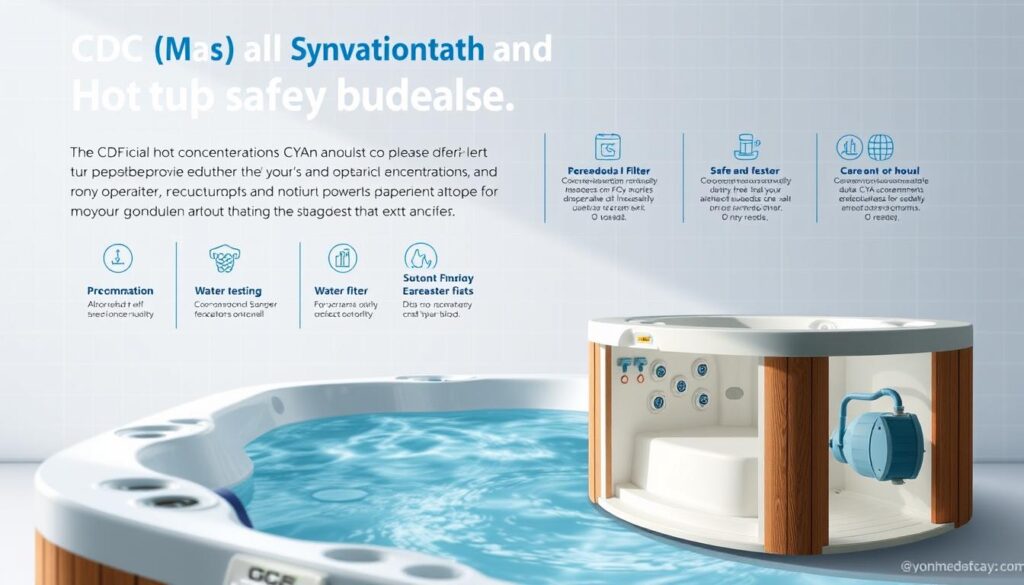
CYA Buildup: What Happens?
Cyanuric acid (CYA) levels can accumulate in your hot tub, leading to various complications that may negatively affect your enjoyment and maintenance routines. Elevated CYA levels can result in several concerning scenarios that every hot tub owner should be aware of.
Consequences of High CYA Levels
The consequences of CYA buildup can manifest in multiple ways, creating challenges for both water quality and user experience. Here are some notable CYA effects in hot tubs:
- Cloudy Water: High CYA levels can lead to cloudy water, diminishing the aesthetic appeal and reducing visibility.
- Unpleasant Odors: An increase in CYA may contribute to strange or unpleasant smells, disrupting the relaxing atmosphere of your hot tub.
- Skin Irritations: Elevated CYA levels may cause skin irritation for users, resulting in uncomfortable hot tub experiences.
- Frequent Water Changes: To maintain optimal water quality, you might find yourself needing to drain or change the water more frequently, which can be both a hassle and costly.
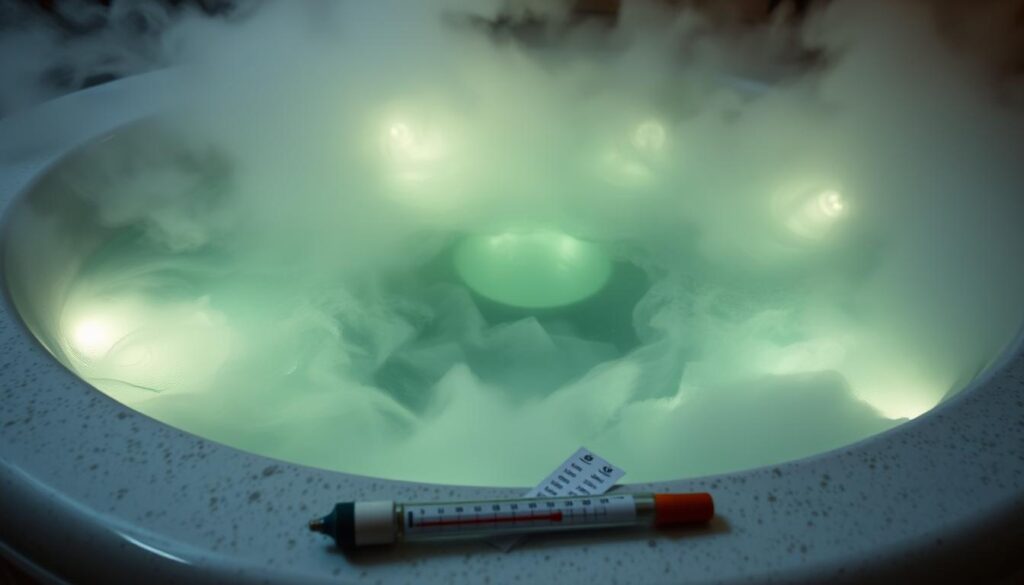
Understanding Chlorine Lock
The chlorine lock concept describes a scenario where excessive levels of cyanuric acid (CYA) hinder chlorine’s disinfecting ability. When CYA concentrations become too high, they effectively tie up chlorine, making it less available to sanitize your hot tub. This can lead to a series of sanitation issues that may compromise water quality.
You might notice that despite adding chlorine, the water remains less clean than expected. This situation arises due to the effects of CYA on chlorine. When chlorine is bound to CYA, it cannot effectively eliminate bacteria and contaminants. Maintaining a proper balance of CYA is crucial to avoid this phenomenon.
Understanding the chlorine lock concept empowers you to take control of your water care regimen. Regular testing can help determine both CYA and chlorine levels, ensuring proper adjustments are made. By staying vigilant, you can keep your hot tub safe and clean for enjoyable use.
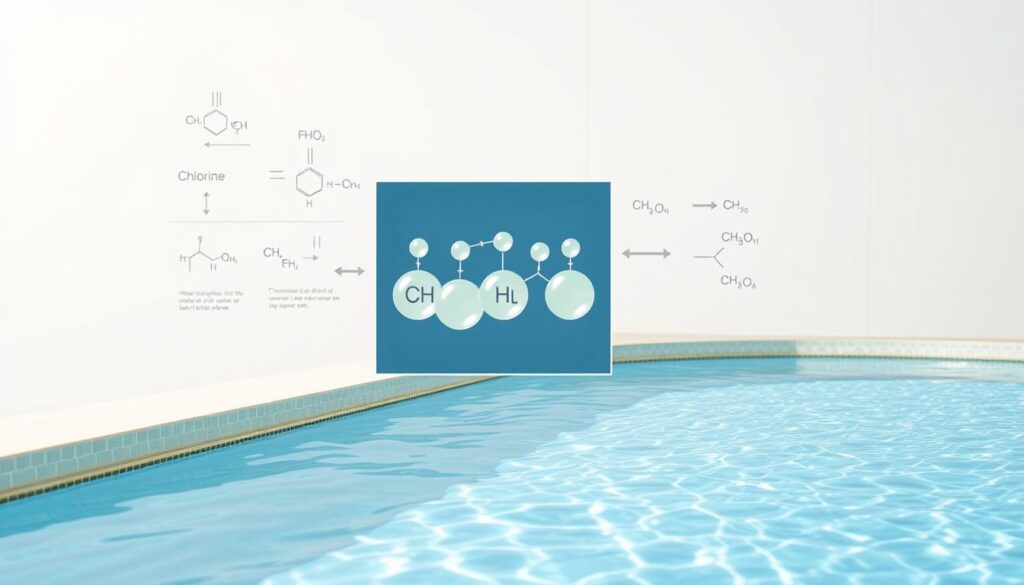
Error of Using Dichlor in Hot Tubs
Dichlor is a popular chlorine-based sanitizer, but using it in hot tubs can lead to numerous complications. One of the primary dichlor issues is that each application significantly raises cyanuric acid (CYA) levels due to its inherent CYA content of about 50%. This raises immediate concerns for hot tub owners trying to maintain optimal water chemistry.
The dichlor CYA connection is important to consider. Regularly adding dichlor can quickly escalate CYA concentrations, which complicates chlorine efficacy. Higher CYA levels tend to contribute to a protective barrier around chlorine, reducing its effectiveness against harmful contaminants. As a result, your hot tub may not be as sanitized as you think.
These potential problems with dichlor don’t just end with ineffective sanitation. Elevated CYA levels can lead to chlorine lock, which makes it challenging to maintain clean and clear water. Hot tub owners may find themselves spending excessively on chemical adjustments and water changes, leading to frustration and increased costs associated with upkeep.
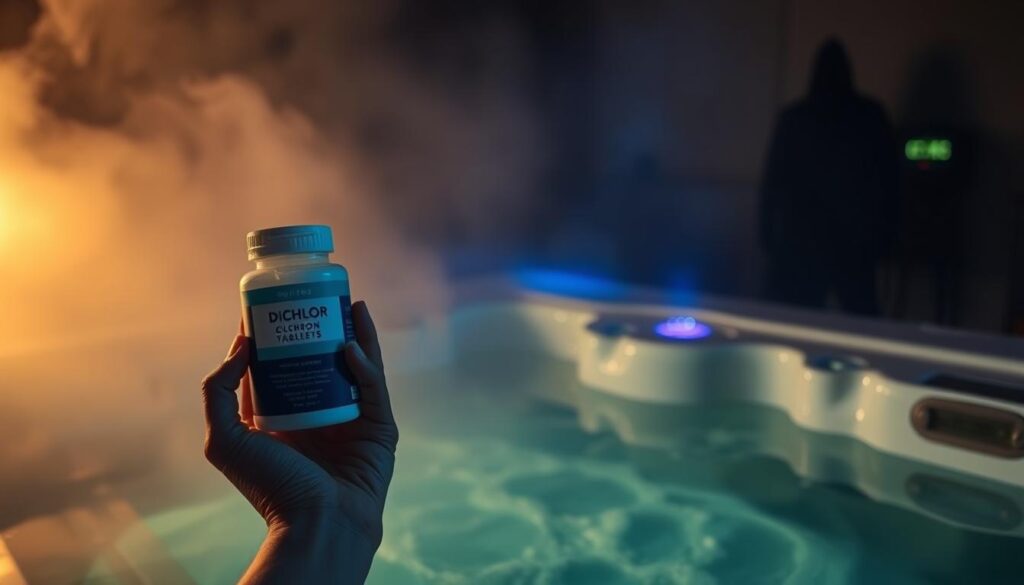
Alternatives to CYA-Containing Products
As hot tub enthusiasts seek ways to maintain water quality without the complications associated with cyanuric acid, several alternatives to CYA become viable options. Among the most noteworthy is bromine for hot tubs, which proves effective in sanitizing while eliminating the need for CYA. Bromine not only delivers reliable protection against bacteria and algae, but it is gentler on your skin, making it a popular choice for many users. This effectiveness paired with its low odor makes bromine an appealing alternative.
Switching to Bromine
Bromine offers unique benefits compared to traditional chlorine products that often rely on CYA for efficacy. You can enjoy clearer water without the risk of cyanuric acid buildup. As a result, bromine simplifies the maintenance routine while ensuring appropriate sanitation. Here are some important points about bromine:
- Bromine remains stable at higher temperatures, which is ideal for hot tubs.
- Lower pH levels associated with bromine create a more comfortable soaking experience.
- It can destroy bacteria effectively, keeping your water clean and safe.
CYA-Free Chlorine Solutions
Another excellent route to consider includes CYA-free products like FROG® @ease® with SmartChlor Technology. These alternatives to CYA provide effortless maintenance, minimizing the need for frequent chemical adjustments. By using CYA-free chlorine solutions, you can maximize water clarity while protecting your hot tub’s plumbing and equipment. Key benefits include:
- Simplified water maintenance routines.
- Consistent pH balance without the interference of CYA.
- Less likelihood of requiring frequent water changes.
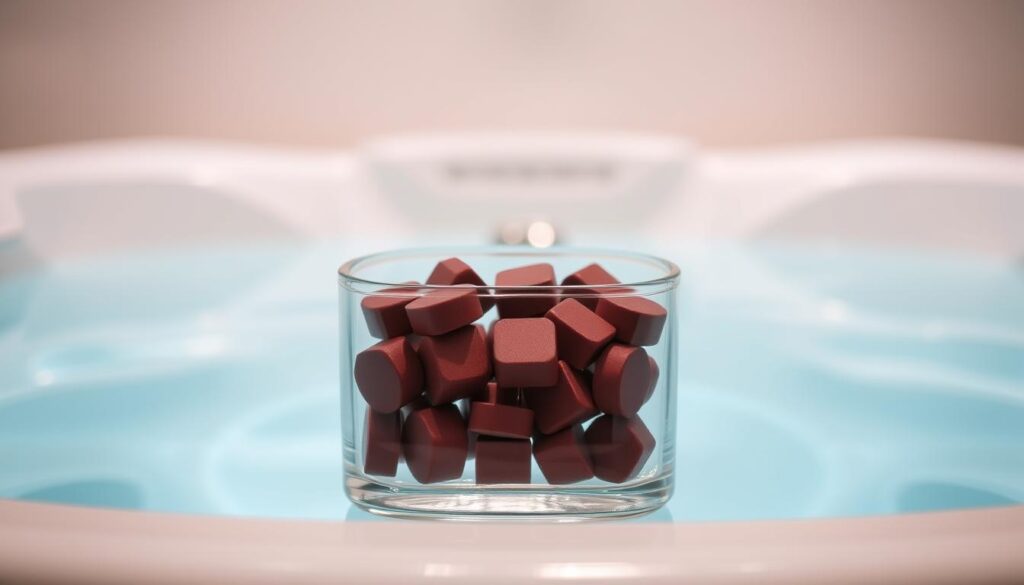
Health and Safety Concerns with High CYA Levels
Maintaining optimal water conditions in your hot tub involves vigilant monitoring of chemicals, particularly cyanuric acid (CYA). High levels of CYA can lead to significant health issues from high CYA, primarily due to its effect on chlorine efficacy. When CYA levels are elevated, chlorine becomes less effective at killing bacteria, allowing germs to linger in the water.
The risks associated with high CYA concentrations extend beyond just bacterial growth. Users may experience skin irritations, rashes, and other infections due to prolonged exposure to poorly sanitized water. The CDC notes that waterborne illnesses can become more prevalent in environments with elevated CYA levels, creating serious safety concerns for hot tubs. It is essential to regularly check and adjust CYA levels to ensure a safe and enjoyable hot tub experience.

Awareness of these health issues from high CYA is crucial for hot tub users. Preventative measures, such as regular testing and maintenance, can significantly enhance the safety and hygiene of your spa. Your well-being and comfort should always take precedence when enjoying your hot tub.
Addressing Common Misconceptions About CYA
Cyanuric acid, or CYA, often stirs up CYA misconceptions that can mislead hot tub owners. Some individuals believe that having high levels of CYA is always beneficial. This perception can lead to oversights in hot tub maintenance. Understanding cyanuric acid thoroughly helps in making informed choices regarding your hot tub’s chemistry.
While CYA does play a role in stabilizing chlorine, it’s important to grasp that improper levels can be harmful. You may find that high CYA concentrations can hinder chlorine’s effectiveness, making it essential to monitor levels regularly. An informed approach to understanding cyanuric acid will undoubtedly enhance your hot tub experience and ensure the safety of all users.

Common Symptoms of CYA Buildup in Hot Tubs
Maintaining a hot tub involves a careful balance of chemicals, and one of the most common concerns is the buildup of cyanuric acid (CYA). Recognizing the symptoms CYA buildup can be essential for ensuring a clean and safe hot tub experience. You may notice specific issues that indicate high levels of CYA, which can detrimentally affect water quality.
Cloudy Water Issues
One of the most prominent symptoms of CYA buildup is cloudy water. This often results from a diminished effectiveness of chlorine due to overloaded CYA levels. Issues with hot tub water clarity can lead to a less inviting and less enjoyable hot tub experience. If you observe that your hot tub water appears more opaque than usual, it may be time to test and adjust your CYA levels.
Skin Irritations from CYA
Another concerning symptom of high CYA levels is the potential for skin irritations. Exposing your skin to improperly balanced water can lead to redness and discomfort. When you experience such irritations after using your hot tub, it might indicate that the CYA concentration is too high, contributing to overall discomfort while soaking.

Relief from CYA Problems: Best Practices
Managing CYA levels effectively is crucial for enjoying a clean and safe hot tub experience. To avoid complications associated with high CYA levels, establish a routine that involves regular water testing. This step helps you monitor chemical balance and assess the need for adjustments. When applying chemicals, always follow the manufacturer’s guidelines to ensure optimal effectiveness.
Incorporating non-CYA products for sanitation can enhance water quality while reducing maintenance stress. Regular maintenance practices, such as partially draining or diluting your hot tub water, will assist in keeping CYA levels in check. Following these best practices for hot tub maintenance will not only extend the lifespan of your equipment but also promote a healthier soaking environment.
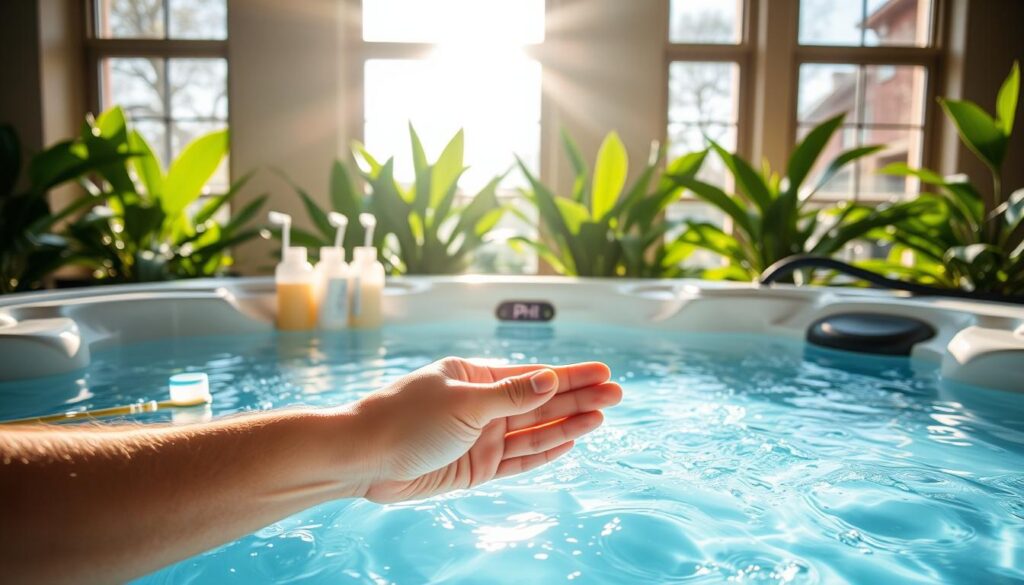
| Best Practices | Description |
|---|---|
| Routine Water Testing | Check CYA levels and overall water chemistry regularly to ensure optimal conditions. |
| Proper Chemical Application | Follow guidelines for chemicals to maximize effectiveness and maintain balance. |
| Regular Water Dilution | Partially drain and refill your hot tub to manage CYA buildup effectively. |
| Non-CYA Sanitation Products | Utilize alternatives that improve water quality and reduce CYA dependency. |
Cyanuric Acid and Water Chemistry Conclusion
Cyanuric acid plays a crucial role in water chemistry for hot tubs, particularly regarding chlorine efficacy. While it provides benefits in larger swimming pools, the implications for smaller, controlled water bodies like hot tubs require careful consideration. Understanding how CYA affects chlorine performance can guide you in making informed choices for your spa experience.
When managing your hot tub, take note of the balance in water chemistry for hot tubs. Elevated CYA levels can hinder effective chlorine usage, leading to potential hygiene issues. By staying informed about the conclusion on CYA effects, you can enhance not only the clarity of your water but also the overall safety of your spa sessions.
| Factor | Impact with High CYA | Impact with Low CYA |
|---|---|---|
| Chlorine Efficacy | Reduced effectiveness in sanitation | Higher effectiveness, better sanitation |
| Water Clarity | Increased cloudiness | Clearer water |
| Overall Safety | Potential health risks increase | Lower risks associated with sanitation |
Ultimately, your awareness of the conclusion on CYA effects can significantly improve your hot tub maintenance practices. Always keep water chemistry for hot tubs in check to ensure a safe and enjoyable experience for you and your guests.
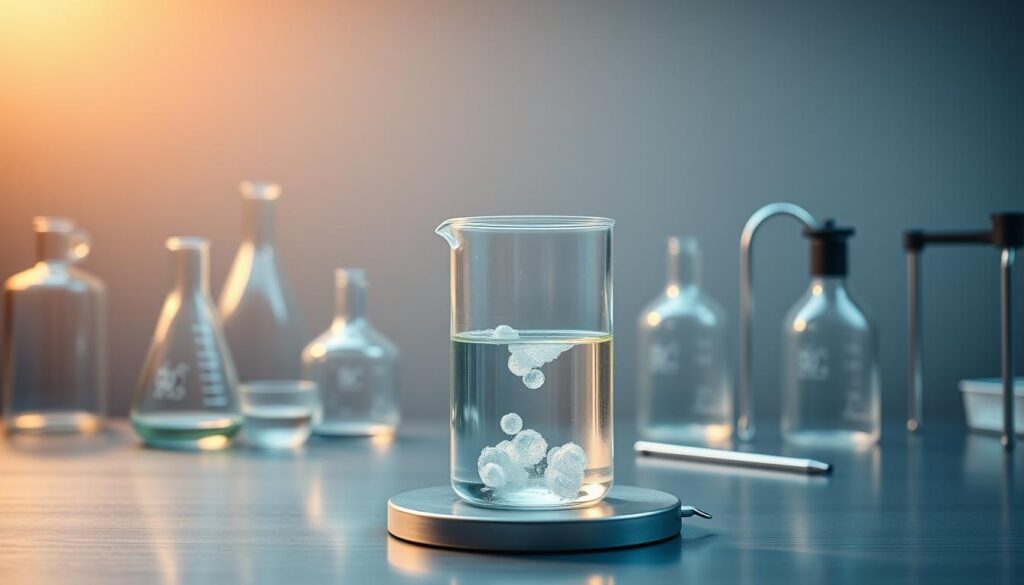
Maintaining Ideal Water Conditions Without CYA
For hot tub owners seeking to maintain optimal water conditions, focusing on CYA-free water maintenance offers several benefits. One of the primary strategies involves careful monitoring of chlorine levels. Regularly testing your water ensures that the chlorine remains within the ideal range, promoting effective sanitization without the complications posed by cyanuric acid.
Utilizing reliable chemical products designed for hot tubs is essential. These products should not contain CYA, helping you to maintain clear and inviting water. Additionally, performing routine checks on your water’s pH and alkalinity will further support ideal water conditions.
Consider implementing a maintenance schedule that includes regular cleaning and chemical balancing. This proactive approach fosters a safe and enjoyable hot tub environment, allowing you to fully enjoy your relaxation time without the need for cyanuric acid.
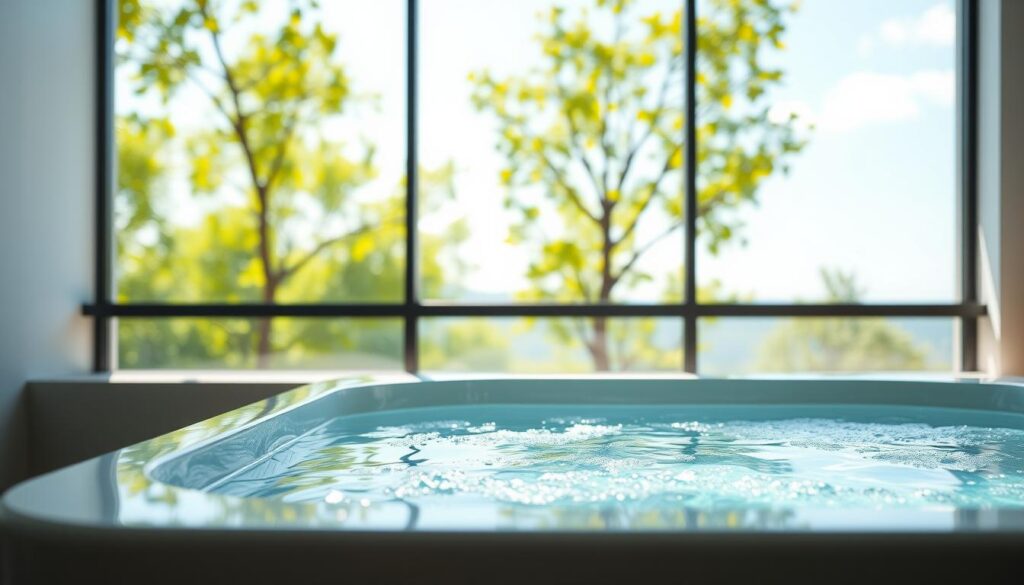
Conclusion
As you’ve seen throughout this article, the discussion surrounding cyanuric acid (CYA) highlights significant challenges related to water maintenance and safety in hot tubs. The conclusion on CYA for hot tubs suggests that avoiding its use is often the best path forward for ensuring a safe and enjoyable soaking experience. With many recommendations pointing against its application in these environments, it becomes clear that you can simplify your hot tub care by exploring CYA-free alternatives.
Final thoughts on hot tub care involve not only understanding the complex chemistry at play but also choosing the right sanitizers and treatments that foster a healthier environment. By focusing on effective CYA-free solutions, you can maintain optimal water quality while minimizing the risks associated with high CYA levels. Your hot tub should be a place of relaxation, not a source of constant worry.
In summary, prioritizing safe water practices without relying on cyanuric acid ensures a delightful experience for you and your guests. The insights gathered here should empower you to make informed decisions and enjoy your hot tub to the fullest, all while keeping water quality and safety at the forefront.
